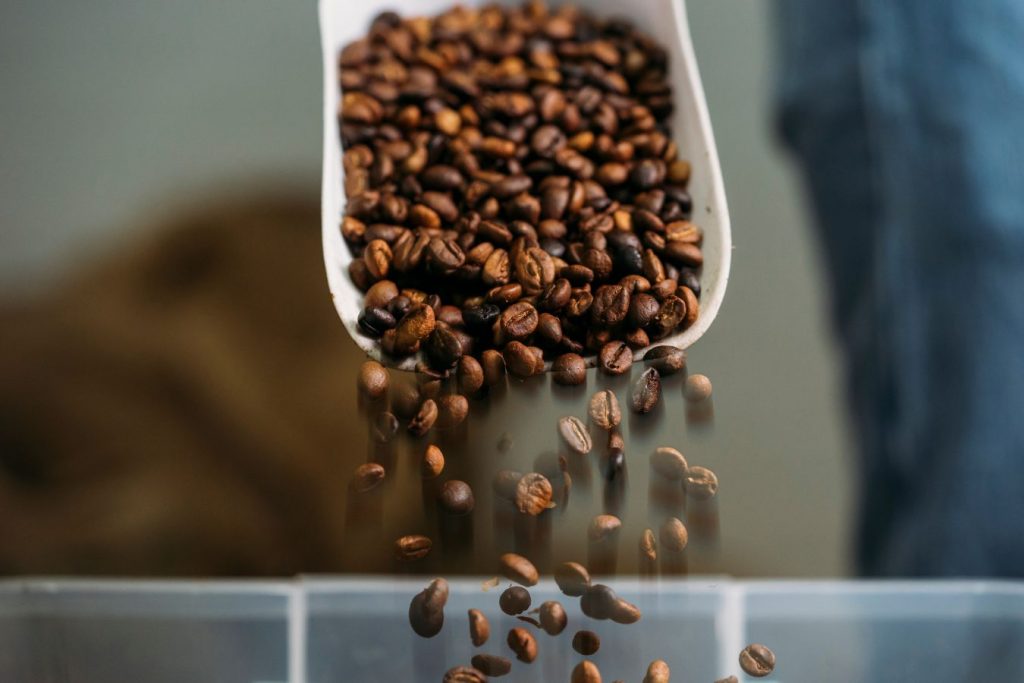Do you know what happens during the roasting process of coffee? What changes make green beans into the flavorful, aromatic ones we love? In part one of this two-part series, we looked at how the coffee bean’s anatomy played a vital role and outlined the physical changes during roasting. Now let’s look at some chemical modifications, including how flavour and aroma develop.
Roasting coffee
Roasting coffee transforms green coffee beans’ chemical and physical properties into roasted coffee products. The roasting process produces the characteristic flavour of coffee by causing the green coffee beans to change in taste.
Unroasted beans contain similar if not higher levels of acids, protein, sugars, and caffeine as those that have been roasted but lack the taste of roasted coffee beans due to the Maillard and other chemical reactions that occur during roasting.
Why is roasting important – or is it?
Coffee beans are seeds matured in a coffee cherry. They are then processed and dried into coffee beans. Before roasting, coffee beans are green in color and have a beany and grassy aroma. Green coffee beans do not smell like coffee at all.
When we roast coffee, we develop 800 to 1000 different aroma compounds. These compounds make the flavor of the coffee. With roast profiling, we can affect the existence of these aroma compounds in coffee and determine the coffee’s taste.
The process of roasting coffee beans
Drying the coffee beans
Green coffee contains up to 11 percent water, which must be distributed in the bean and evaporated before roasting. Therefore, the roaster is heated and fed to the beans in the first phase until the water evaporates (at about 20-130 ° C). This phase is critical and must be done so that the whole bean is clear of the water. Otherwise, it will roast less inside and get an unpleasant, grassy taste.
The Maillard reaction
From about 130°C, it starts with roasting. Now the beans slowly turn yellow and change colour to a beautiful caramel-like brown. Chemical processes take place in the bean, especially the so-called Maillard reaction. The beans are significantly more prominent, and the delicate cuticles dissolve.
When Gene roasters, these cuticles are automatically blown away by the airflow. In the Hottop roaster, you should turn on the ventilation here at the latest so that the pellets do not remain between the beans and burn.
First Crack
A big moment for you as a roaster. In the bean, carbon dioxide and steam develop a pressure that bursts the bean. You can recognize this by cracking (cracking) or crackling. From now on, your time as a roast master or roast master, because the beans are now drinkable, and you decide with the duration of how dark your roasting. Now you have to add some heat again, so the beans develop nicely.
With the degree of roast, you now decide on the right balance between acidity (more about the acidity in coffee, by the way, you will find it here) and bitterness. There are names for levels of roasting that are common, and you should know them as a home roaster. You can find more about this here.
Second Crack
If you’re roasting for filter coffee, you’ve probably finished the roast before the second crack (second crack). For espresso or dark roasts, the second crack is a critical time. It’s a double bursting of the bean; the pops are a bit finer than the first crack.
From now on, oils emerge from the beans, which you can recognize by the slightly shiny surface. The coffee’s acids and characteristic flavors are now only fragile, but the beans now have a more roasted taste and are also significantly bitter.
Cooling the roasted beans
Again, this is an essential step in roasting, as the beans need to be cooled down quickly to stop the reactions and the coffee from roasting. With the Hottop coffee roaster, this is easy at the touch of a button – the beans are quickly cooled.
The Gene Café coffee roaster lacks such a device for cooling. Here you can build with instructions from the Internet cooling device or cool them, for example, with a sieve over a fan.
The storage of coffee
After roasting, carbon dioxide still exits the beans. This affects the taste immediately after roasting. Therefore, you should wait a few days until you grind the coffee and drink it. In our experience, coffee is best between the third and the tenth day after roasting.
After that, the essential oils that make up the taste of coffee have already gone, so the flavor is significantly fluffier. The best way to store the beans is in a bag with a valve (you can find them in our shop) or in a can with a valve, so that although carbon dioxide can escape, no oxygen comes in.

